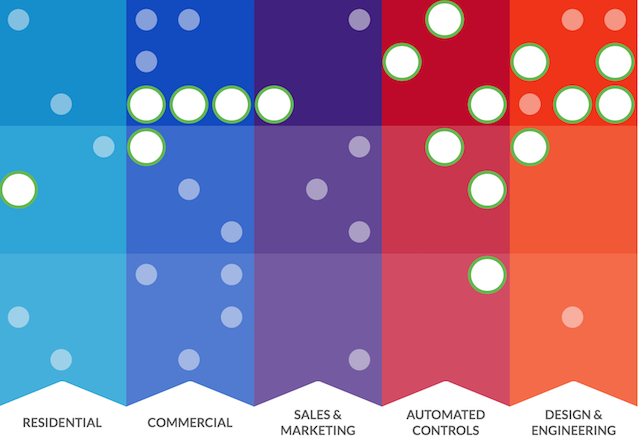A new career map, Careers in Climate Control Technology, provides a first-of-its-kind interactive, visual tool to showcase the employment opportunities that exist in the swiftly growing HVAC/R industry – Heating, Ventilation, Air Conditioning and Refrigeration. The sector is on track for projected growth of 15 percent from 2016 to 2026.
The challenge is that HVAC/R training programs at community colleges and other institutions struggle to get students interested in their programs. This new career map offers a powerful tool that can be used by educators, career advisors, students, military veterans, employers, policy makers, workforce professionals and others to see the wide variety of high-quality jobs that exist in the industry. It also illustrates how advancement is possible after just a few years of experience.
The map identifies five sectors within the industry – residential, commercial, sales and marketing, automated controls, and design and engineering. It highlights 40 jobs and more than 150 advancements between those jobs and across sectors.
“The Careers in Climate Control Technology map explores an industry exploding with job opportunities in heating, air conditioning and refrigeration technologies, describing diverse occupations across the industry, the multitude of advancement routes (over 150) between jobs and sectors, and identifying the sorts of credentials necessary to do these jobs well,” explains Joe Sarubbi, project coordinator for IREC.
“The map includes a section on ‘green’ or clean energy jobs within the industry,” adds Sarubbi, “jobs with a mission to design, build and operate high-quality, healthier and more energy-efficient homes and commercial or industrial buildings.”
Details provide a brief description of each job, with salary range, information on education and training, as well as skills and requirements necessary to do the job well. The information was assembled with the participation of five subject matter experts across the HVAC/R industry.
In addition to the map itself, other information on the industry and its sectors is provided, along with training information and resources specifically for veterans, and a frequently asked questions section. To complement the map, a short video guides viewers through the map’s features.
“Community colleges provide many of the trade and technical training options for the clean energy workforce, and are essential to building a pipeline for workers trained for jobs that require skills and knowledge to work with or around clean energy technologies,” said IREC President/CEO Larry Sherwood. “This tool for the HVAC/R industry is built off the model for a solar career map IREC created in 2015. We see these as a valuable contribution to the growing clean energy economy and expect to engage in similar projects in the future.”
Funding for the Careers in Climate Control Technology map was made possible by the Proposition 39 Clean Energy Workforce Program Grant, a statewide California initiative that transferred $550 million annually to the Clean Energy Job Creation Fund from 2013 – 2018. The California Community Colleges Chancellor’s Office invested approximately $6 million from the fund each year in clean energy workforce training programs across the state’s 114 community colleges.





